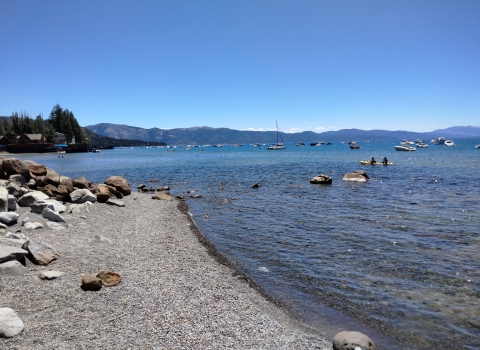The Lake Tahoe Basin faces ongoing threats from the introduction and spread of aquatic invasive species invasive species
An invasive species is any plant or animal that has spread or been introduced into a new area where they are, or could, cause harm to the environment, economy, or human, animal, or plant health. Their unwelcome presence can destroy ecosystems and cost millions of dollars.
Learn more about invasive species . Common invasive weeds, like the Eurasian watermilfoil, can significantly disrupt aquatic ecosystems and crowd out native species. Aquatic invasive species management is a top priority of the Lake Tahoe Environmental Improvement Program, one of the most comprehensive restoration programs in the nation.
The Bipartisan Infrastructure Law was signed in November 2021 and made a historic $17 million investment in the Lake Tahoe Basin. A total of $13.3 million has been dispersed to date supporting collaborative restoration efforts in the Basin.
Take a visual journey and learn about the ongoing aquatic invasive species management efforts in the Lake Tahoe Basin. To view this content in an interactive StoryMap, click here. If you have trouble viewing the StoryMap, access this content on the U.S. Fish and Wildlife Service website.



